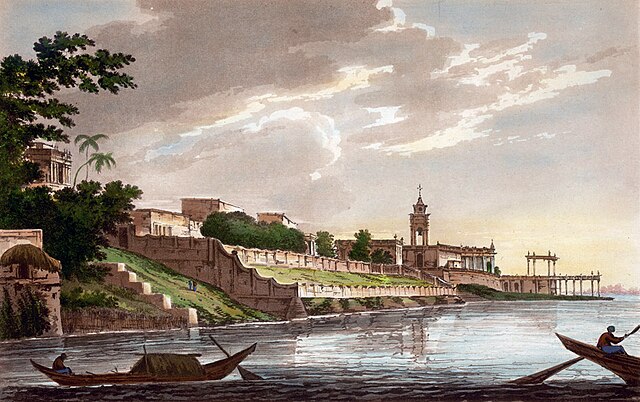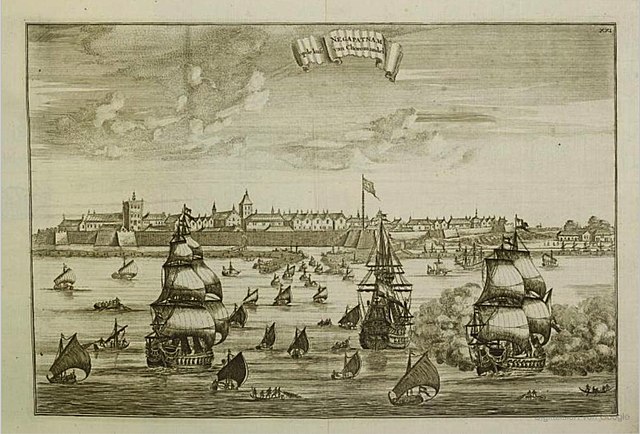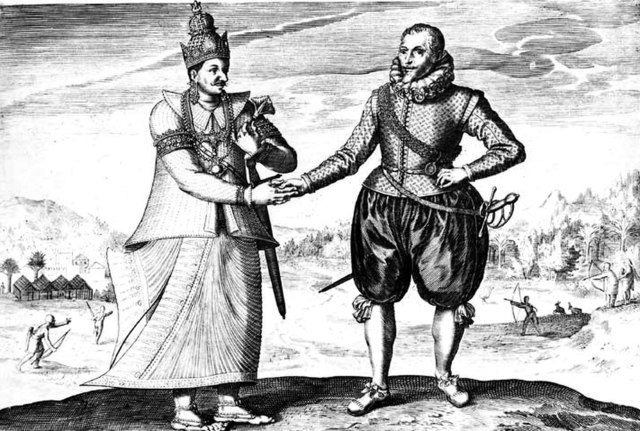Dutch India consisted of the settlements and trading posts of the Dutch East India Company on the Indian subcontinent. It is only used as a geographical definition, as there was never a political authority ruling all Dutch India. Instead, Dutch India was divided into the governorates Dutch Ceylon and Dutch Coromandel, the commandment Dutch Malabar, and the directorates Dutch Bengal and Dutch Suratte.
A View of Chinsura the Dutch Settlement in Bengal (1787).
Gold pagoda with an image of Lord Venkateswara, a form of the Hindu god Vishnu, issued at the Dutch mint at Pulicat, c. 17th or 18th century.
Dutch trading ships in Negapatnam, Dutch Coromandel, circa 1680.
Factory in Hugli-Chuchura, Dutch Bengal. Hendrik van Schuylenburgh, 1665.
Dutch Ceylon was a governorate established in present-day Sri Lanka by the Dutch East India Company. Although the Dutch managed to capture most of the coastal areas in Sri Lanka, they were never able to control the Kingdom of Kandy located in the interior of the island. Dutch Ceylon existed from 1640 until 1796.
Dutch Ceylon
Vimaladharmasurya I receiving Joris van Spilbergen, 1603
The Batticaloa fort, around 1665
Dutch Colombo, based on an engraving of circa 1680








